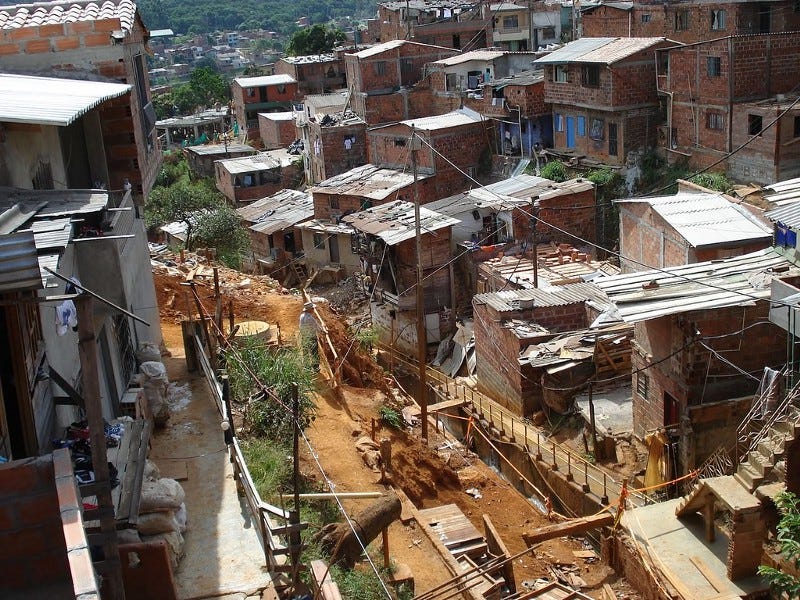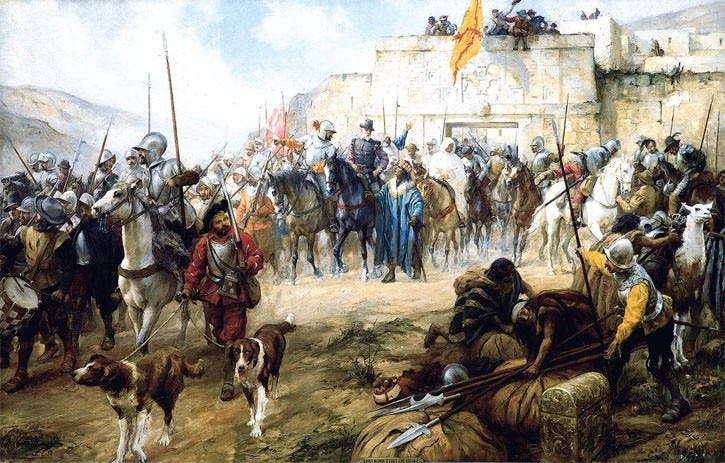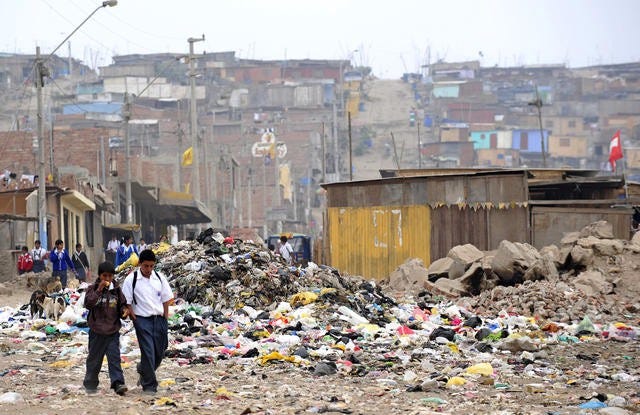Issues of Inequality in Latin America
Latin America has long been one of the most unequal and poverty-stricken regions in the world, although the levels of said poverty and inequality seems to be changing for the better. This economic inequity has been attributed mainly to the Spanish and Portuguese colonial past of the continent. The trend of poverty and inequality appears to be reversing, though, in light of such findings as that of the Latin American Economic Outlook of 2012 and ECLAC’s Social Panorama of Latin America report of 2011 (ECLAC, 2011), (OECD, 2011), which noted that from the years 2002 to 2008, poverty was reduced by 44 percent of the population to 33 percent. The social and economic costs of poverty are also being reduced due to more active and involved governments across the region. These governments, in some cases for the first time, are making strides to create social safety nets and welfare programs. Social expenditures vary widely from country to country. Social security is in place in most countries, set up as to assist families and individuals in differing economic quintiles. Inequality in Latin America has been reduced, despite it remaining a very real and present problem. ECLAC’s Social Panorama of Latin America in 2011 attributes the decline of inequality in the region to a number of factors, among them improvements in the availability and quality of education, more equal pay for equal work and public cash transfers which act as income to those on or below the poverty line. Poverty and inequality are on the decline in Latin America for these factors and others, and the midterm outlook for the region is tentatively promising.
Poverty and inequality in Latin America are due primarily to the historical factors of its colonial past. The Spanish and Portuguese conquest of the area had the consequence of importing the contemporary ruling political economy from the respective countries. Spain and Portugal had only recently been freed from Moorish domination and rule, and therefore had not been participants in the Reformation which had swept the rest of Europe. Because of this lack of political and societal reform, the Spanish and Portuguese royal governments and their emissaries still viewed the world through a feudal scope. As opposed to their contemporaries in North America, the French and the British, they believed in utter domination of the indigenous peoples of the “New World” they had found themselves in, and, because of the centuries of rule by the Muslims, religious zealotry was at a fever pitch. When they arrived at the shores of Latin America, the Spanish and the Portuguese saw first a land of opportunity they had been given by God as a reward for their time under the Muslim boot. With this sense of God-given rights to the land, the treatment of the natives, who were similarly heathens, was inevitably harsh. Conversion by the sword was the preferred manner of bringing the indigenous people to the light of Christ. Armed with their spiritual righteousness, the Spanish conquistadors subjugated the indigenous people of Latin America to a brutal caste system in which they were little more than slaves to do the bidding of their new masters. This template of domination set up for the newly independent people of Latin America a system in which those who now were in charge of the poor had a lower caste already waiting. The historical system of domination created the conditions for widespread and endemic poverty and inequality (Skidmore et al, 2010, p. 16–22), (Wiarda et al, p.19–22).
Throughout most of the post-independence period, Latin America has struggled with the inequities of its economic status quo. The strongmen of Latin American governments, or caudillos, have enriched themselves and their political and familial allies though patronage and distribution of wealth. The oligarchical structure of Latin American society has led naturally to a social order in which those at the top are massively enriched and those at the bottom live lives of abject poverty and need. After the independence movements of the nineteenth century, and through much of the twentieth century, much of Latin American politics were marked by chaotic violence and turmoil, civil wars and coups. The lack of political stability has naturally led to a corresponding economic instability (Skidmore et al, 2010, p.37–40), (Wiarda et al, 2011, p.24–25). For example, in Colombia in the twenty years of the civil war known as La Violencia in the middle of the twentieth century, the political situation of deadlock aggravated the economic problems of a major move of the populace from the country to the city. The growing unemployment and almost complete lack of political agency by the swelling ranks of the poor was exacerbated by the state’s inability to govern effectively, which gave rise to a shadow economy that relied on drug trafficking and the black market (Wiarda et al, 2011, p.218) Colombia’s mid-twentieth century political and economic problems are indicative of the broader problems poverty and inequality created and were created by after independence in Latin America as a whole.
Latin American governments have taken legislative strides in the past decades to address the problems of economic inequity. Government programs to address the problems of widespread poverty, indigence and inequality have had positive effects on the living standards for many of the disenfranchised and impoverished. Cash transfers, though by no means perfect or ideal to solve issues of economic uncertainty, have had some positive effect in providing a modicum of relief. Social security is available in some nations to provide for the less fortunate. Chile’s use of their national surplus, due to the rise in the price of copper, to ease the pain of the 2008–2009 global recession is an innovative solution to an economic near-catastrophe (Wiarda et al, 190). Brazil has moved to reduce pay gaps due to race and gender (ECLAC, 2011). Independent interest groups representing the disenfranchised in Latin America have gained some power in recent years, marking a change from the past, in which such groups operated only under the auspices of the government. These groups have made substantial strides in opening up political dialogue and the political system as a whole, which in turn has led to forcing the government to address the widespread problems of poverty and inequality. Women’s groups and indigenous groups have largely headed this process (Wiarda et al, 2011, p.51–54).
Latin America’s economic growth has been a factor in the change in distribution of income and general poverty. Latin American exports have grown at a relatively stable rate for the past two decades, so much so that during the financial crisis that crippled most of the global economy in 2008–2009, the region was not affected to nearly the same extent as the rest of the world. While exports did fall by around two percent for the region, this drop was not as precipitous as it could have been given the external factors and the health of the economies Latin America exports to, mainly the United States, EU and China. Economic liberalization, free trade and a healthy export market for Latin American goods all have contributed to the economic growth of the area, which has in turn led to more available domestic capital for internal investment. Although Latin America still has many challenges to overcome to use this wealth responsibly and for the good of the people, the potential for positive change exists with a stronger economy and more responsive governments (Skidmore et al, 2010 p.374–375).
The midterm prospects for Latin America overcoming its problems of poverty and inequality are positive. The rate of poverty has decreased by over ten percent from 2002 to 2008, and inequality has also been on the decline. The Gini index, which measures inequality from a scale of one to one hundred, where one is perfect equality and one hundred perfect inequality, has shown a trend towards greater distributive equity within Latin America (ECLAC, 2011, p.50). The region as a whole still has the worse levels of disparity in wealth in the world, but if the current trend holds, there is a real chance that Latin America can change its historical propensity towards poverty and inequity and have a more stable and egalitarian society. Similarly, the more responsive governments that have gained power in recent years in the area have had an effect on their populace’s economic well being. The combination of welfare, social security, and economic liberalization and free trade all are working together to begin to alleviate the poverty and economic insecurity experienced by much of the population. The World Bank noted in June of 2012 in their Global Economic Prospects Report that capital inflows to the region have bounced back following the aftermath of the 2008–2009 crash, although they warn that Latin America, along with much of the world, will see a gradual deceleration of growth as a whole in 2012, in part due to a low growth carryover from 2011 (World Bank, 2012). The IMF released a document on global economic trends projected for the coming year on October 12, 2012, which had positive news for the world as a whole and Latin America specifically. Despite the mild recessionary growth level in fiscal year 2012, in which the GDP growth was 3.2 (in opposition to 2011, when it was a more robust 4.5), 2013 is projected to bounce back with a growth rate of 3.9 (World Bank, 2012) Hopefully, the countries of Latin America can manage to find the balance between robust, liberal economies and progressive, helpful governmental assistance programs that will unite to lift the region out of its current economic situation.
References
ECLAC. (2011) Social Panorama of Latin America. Santiago, United Nations Publication
IMF. (2012) Regional Economic Outlook Update- Latin America and the Caribbean, October 2012. Washington, D.C., International Monetary Fund
OECD. (2011) Latin American Economic Outlook 2012: Transforming the State for Development. New Milford, Organization for Economic Co-operation and Development
Skidmore, T., Smith, P. and Green, J. (2010) Modern Latin America. New York, New York: Oxford University Press
The World Bank. (2012) Global Economic Prospects June 2012: Latin America & the Caribbean Annex. Washington, D.C., The International Bank for Reconstruction and Development/The World Bank
Wiarda, H. and Kline, H. (2011) Latin America: Politics and Development. Boulder, Colorado: Westview Press






